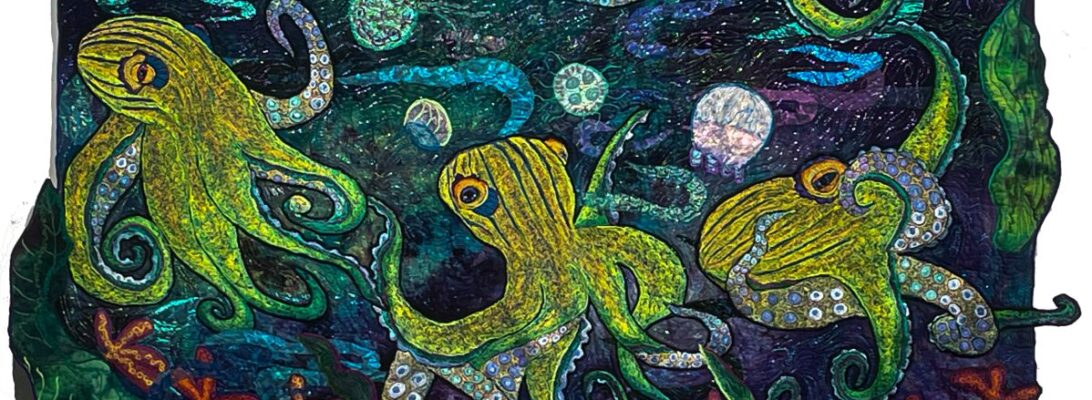I started a new quilt this week. like most quilts, it started with an incredible piece of fabric.
It’s been a while since I’ve dyed, so I’m down to the most fabulous, I’m scared to use it wrong fabric, and the stuff I really don’t care about.
This piece took time to figure out because it’s only a half yard. Sometimes that’s plenty of space. Sometimes it’s not.
but it made such a good pond. All that yummy blue purple against yellow.
I wanted herons, and I found a sketch of herons I used for my information.
Unfortunately, when I looked up the specifics, it was a whistling heron.
In case that sounds unfamiliar to you, you’re not alone. A whistling heron is from eastern Asia.
Is it different especially from other herons? Not so much. Heron head, heron wings, heron feathers. But yellow. The body is yellow.
I think you can see my problem. A yellow heron is going to show up on this like a yetti in a snow storm.

OK. How real do I have to be? What do I want to accomplish with this piece? Am I copying life precisely? Am I playing with interesting shapes or colors? How tied am I to “The Real Thing.”
Henry James wrote a story called “The Real Thing.” It was about an artist who had a reduced gentleman and lady offer themselves as models to him. That had to be a pretty harsh come down in the world for them.
They said they were the real thing, but in truth, they were only that one real thing. He found the girl who could be a gypsy, madonna, dance, lady and probably was a lady of the night, a much better model because she could be anything with his imagination.
Modern art launched right around the beginnings of photography. There’s a reason for that. Up until then, the goal was to come closer and closer to real. Suddenly, you could have a completely real image at the click of a button. An artist can’t really compete with that. So different things have to happen.
So where do we go if we’re not more and more “real?” We start exploring, shape, light, color and texture. We start to think what if. We start to let the art define itself. We find it defines us in the process. That’s a whole lot more scary than real.
But worth it.

I decided these herons could just be herons. And little blue herons are the perfect color behind all that lovely lemon yellow.

So these birds can be blue and shine in their yellow, not so realistic but perhaps symbolic, world. That there are pools of water, even in strict drought. That we find them even under extreme conditions and can thrive past the hardships. That we are not completely defined by other people’s real.
You’ll find a free copy of Henry James story, The Real Thing, here if you want to read it. It’s an interesting thing for artists to think about. Why are we painting, sewing, drawing, and create? What do we build in doing that? What reality do we create? Because as artists, that’s our job.





































































































